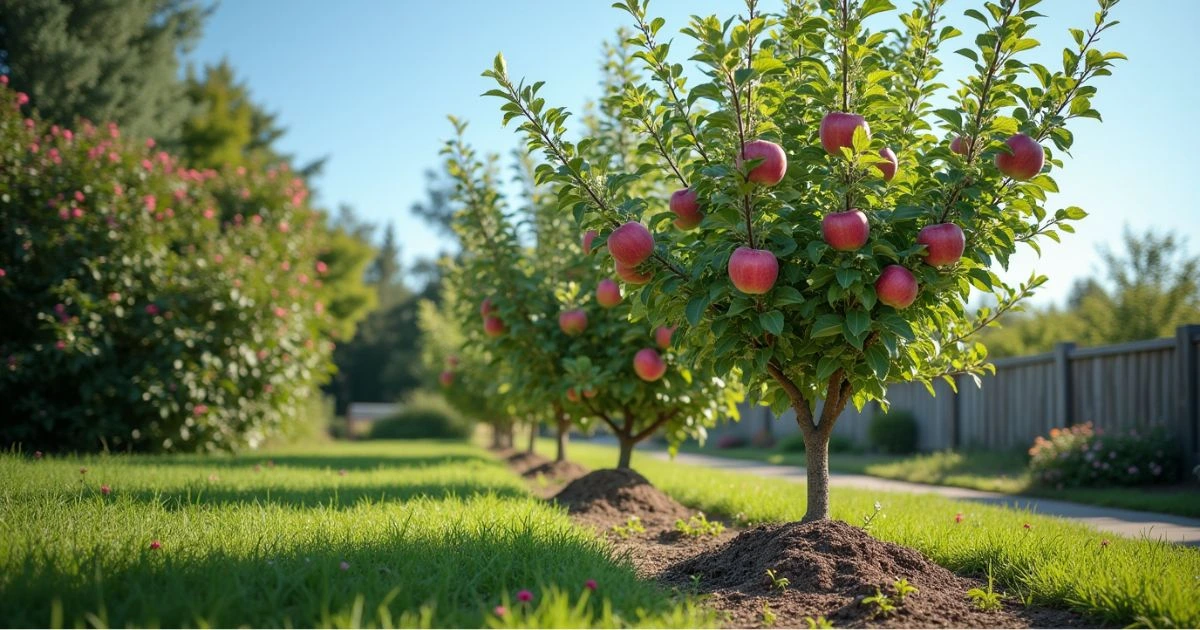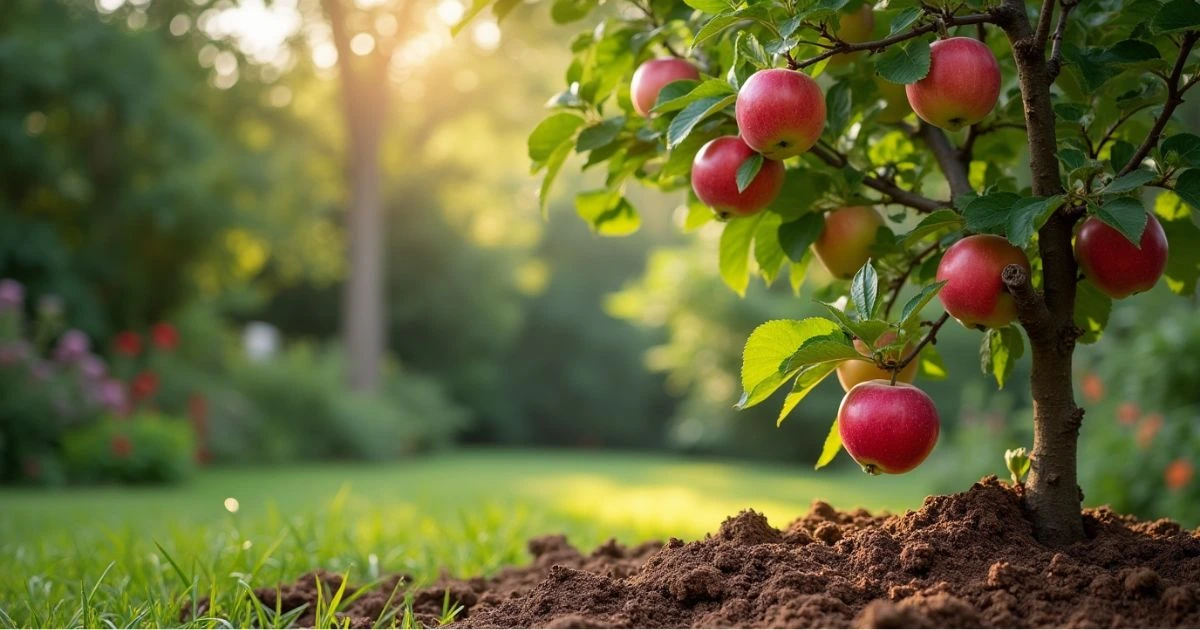Imagine standing under the shade of your very own Pink Lady Apple Tree, the branches heavy with crisp, vibrant apples, ready to be picked. Growing a Pink Lady Apple Tree isn’t just about producing delicious fruit—it’s about crafting a living legacy in your garden, creating a space filled with beauty, and enjoying the fruits of your labor, literally. In this guide, we’ll take you through seven amazing tips that will help your Pink Lady Apple Tree thrive and provide you with years of enjoyment and bountiful harvests.
Table of Contents
Understanding the Basics of a Pink Lady Apple Tree
What Makes Pink Lady Apple Trees Unique?
Pink Lady Apple Trees are prized for their sweet-tart flavor, stunning blush-colored fruit, and exceptional storage qualities. Originally developed in Australia, these apples are a favorite worldwide for their crisp texture and long shelf life. They’re perfect for fresh eating, baking, or juicing, making them a versatile addition to any garden.
Pink Lady Apple Tree Growing Conditions
To grow successfully, Pink Lady Apple Trees require specific conditions:
- Hardiness Zones: Thrive in USDA zones 5-9.
- Sunlight: Need full sun (at least 6-8 hours daily).
- Soil: Ensure the soil is well-draining with a pH level between 6.0 and 6.5.
- Climate: Prefer warm days and cool nights, which enhance the apple’s flavor and color.
7 Amazing Tips for Growing a Pink Lady Apple Tree
1. Choose the Perfect Location

Your Pink Lady Apple Tree’s location determines its long-term success. Finding the perfect spot is critical to providing the optimal environment for growth and fruit production.
- Why It’s Important: Pink Lady Apple Trees require plenty of sunlight to yield high-quality fruit. Without enough sunlight, the apples won’t develop their signature blush and sweet flavor.
- Tip: Select a location that receives at least 6-8 hours of direct sunlight daily. Avoid areas prone to frost pockets, as these can damage flowers and reduce fruit production.
- Real-Life Example: If you’re planting in a yard with slopes, choose the middle or upper part of a gentle slope. This position minimizes frost damage and ensures proper drainage.
2. Invest in Quality Soil

The soil is the foundation for a healthy tree. Ensuring your soil is rich and fertile will help your tree thrive for years.
- Why It Matters: Healthy soil ensures the tree receives adequate nutrients to grow strong and produce flavorful apples.
- Tip: Perform a soil test to assess its pH and nutrient content. Amend the soil with compost, organic matter, or well-rotted manure to improve fertility and structure.
- Extra Advice: If you’re working with heavy clay soil, consider creating raised beds for better drainage. Alternatively, adding organic matter to sandy soils can help retain moisture.
3. Master the Planting Process

The way you plant your Pink Lady Apple Tree sets the stage for its growth. Proper planting ensures the tree’s roots establish themselves quickly and strongly.
- Step-by-Step Guide:
- Dig a Hole: Make the hole twice as wide and as deep as the root ball to allow the roots to spread.
- Position the Tree: Place the tree in the hole with the graft union (a visible bump on the trunk) slightly above the soil level.
- Backfill with Soil: Use the removed soil to cover the roots, pressing gently to remove air pockets.
- Water Deeply: Ensure the soil is well-moistened right after planting to help the roots establish.
- Mulch: Add a 2-3 inch layer of mulch around the tree, keeping it a few inches away from the trunk to prevent rot.
- Pro Tip: Planting in late winter or early spring, when the tree is dormant, yields the best results. This minimizes stress and encourages root growth.
4. Watering Wisely

Water is essential for all living things, and your Pink Lady Apple Tree is no exception. Providing the right amount of water is key to its health and productivity.
- Why It Matters: Consistent watering ensures that your tree develops strong roots and produces high-quality apples.
- Tips for Effective Watering:
- Water thoroughly and less often, targeting the root zone.
- In dry spells, water with 1-2 inches per week. Use a soaker hose or drip irrigation to minimize water loss from evaporation.
- Be cautious of overwatering, as waterlogged soil can cause root rot.
- Example: If you’re in an area with unpredictable rainfall, consider using a rain gauge to monitor water levels and adjust your irrigation as needed.
5. Prune for Health and Growth

Pruning is one of the most critical practices in maintaining a healthy and productive Pink Lady Apple Tree. Proper pruning techniques encourage airflow, reduce disease risk, and enhance fruit quality.
- Why It Matters: A well-pruned tree directs energy to fruit production rather than unnecessary growth.
- How to Prune:
- Timing: Prune in late winter or early spring while the tree is still dormant.
- Focus Areas: Remove dead, diseased, or crossing branches to open up the tree’s canopy.
- Techniques: For young trees, shape them into a central-leader or open-center form. For mature trees, focus on maintenance pruning to sustain their shape and productivity.
- Pro Tip: Use sharp, sanitized tools to make clean cuts, reducing the risk of disease.
6. Fertilize for Success

Fertilization provides your Pink Lady Apple Tree with the nutrients it needs to grow vigorously and produce abundant fruit. A balanced fertilization schedule is essential for long-term health.
- Why It Matters: Without adequate nutrients, your tree’s growth will stagnate, and fruit quality will decline.
- Tips for Fertilizing:
- Apply a balanced fertilizer, such as 10-10-10, in early spring.
- Reapply fertilizer after the fruit sets to support development.
- Incorporate organic options like composted manure or bone meal for sustainable feeding.
- Common Mistake: Avoid over-fertilizing, as this can lead to excessive foliage growth at the expense of fruit production.
7. Protect Against Pests and Diseases

Pests and diseases can quickly compromise the health and productivity of your Pink Lady Apple Tree. Taking preventive measures is the best way to ensure your tree’s vitality.
- Common Issues:
- Pests: Codling moths, aphids, spider mites.
- Diseases: Apple scab, powdery mildew, fire blight.
- Solutions:
- Combat pests using insecticidal soap or neem oil.
- Apply fungicides or plant disease-resistant varieties to reduce fungal infections.
- Keep the area around your tree clean and free from fallen leaves and fruit, which can harbor pests and diseases.
- Proactive Tip: Think about introducing beneficial insects, such as ladybugs and lacewings, to your garden. These beneficial insects assist in managing pest populations.
Additional Tips for Long-Term Success
Companion Planting for Pink Lady Apple Trees
- Plant herbs like garlic, chives, and marigolds nearby to deter pests.
- Add nitrogen-fixing plants like clover to enrich the soil.
Cross-Pollination for Better Yield
- Pink Lady Apple Trees are not self-pollinating and require a compatible pollinator.
- Examples of good pollinators: Fuji, Granny Smith, or Gala apple trees.
Harvesting Pink Lady Apples
- Pink Lady apples are typically ready for harvest in late fall.
- Look for a uniform blush color and test one for sweetness before picking.
Recipes Featuring Fresh Pink Lady Apples
Recipe: Pink Lady Apple Pie
| Ingredient | Quantity |
| Pink Lady Apples | 5 medium |
| Sugar | 1 cup |
| All-purpose flour | 2 tbsp |
| Cinnamon | 1 tsp |
| Pre-made pie crust | 1 |
Recipe: Pink Lady Apple Salad
| Ingredient | Quantity |
| Pink Lady Apples | 2 medium |
| Arugula or spinach | 2 cups |
| Walnuts | 1/4 cup |
| Crumbled feta cheese | 1/4 cup |
| Balsamic vinaigrette | 2 tbsp |
FAQ Section
1. How long does it take for a Pink Lady Apple Tree to bear fruit?
- Typically, 2-4 years after planting.
2. Are Pink Lady Apple Trees self-pollinating?
- No, they need a pollinator such as Fuji or Granny Smith.
3. What is the best time to plant a Pink Lady Apple Tree?
- Late winter to early spring.
4. How do I care for my Pink Lady Apple Tree in winter?
- Protect the tree base with mulch and wrap the trunk to prevent frost cracks.
5. Can I grow a Pink Lady Apple Tree in a container?
- Yes, dwarf varieties are suitable for container gardening.
6. What is the ideal watering schedule for a Pink Lady Apple Tree?
- Deep watering once a week is sufficient.
7. How do I know if my apples are ripe?
- Look for a vibrant blush and test for sweetness.
8. What pests should I watch for on my Pink Lady Apple Tree?
- Common pests are codling moths, aphids, and spider mites.
9. How do I prevent apple scab on my tree?
- Prune for airflow and apply fungicides during the growing season.
10. How long do Pink Lady Apple Trees typically live?
- With the right care, these trees can live for 20 to 30 years.
Conclusion
Growing a Pink Lady Apple Tree is an incredibly rewarding experience. By following these tips and techniques, you’ll not only enjoy delicious fruit but also create a stunning focal point in your garden. With the right care, your Pink Lady Apple Tree will bring beauty, abundance, and joy for many years. Begin your journey now and reap the rewards of your efforts!


